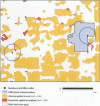Abstract
Pesticides used in agriculture may cause adverse health effects among the population living near agricultural areas. However, identifying the populations most likely to be exposed is difficult. We conducted a feasibility study to determine whether satellite imagery could be used to reconstruct historical crop patterns. We used historical Farm Service Agency records as a source of ground reference data to classify a late summer 1984 satellite image into crop species in a three-county area in south central Nebraska. Residences from a population-based epidemiologic study of non-Hodgkin lymphoma were located on the crop maps using a geographic information system (GIS). Corn, soybeans, sorghum, and alfalfa were the major crops grown in the study area. Eighty-five percent of residences could be located, and of these 22% had one of the four major crops within 500 m of the residence, an intermediate distance for the range of drift effects from pesticides applied in agriculture. We determined the proximity of residences to specific crop species and calculated crop-specific probabilities of pesticide use based on available data. This feasibility study demonstrated that remote sensing data and historical records on crop location can be used to create historical crop maps. The crop pesticides that were likely to have been applied can be estimated when information about crop-specific pesticide use is available. Using a GIS, zones of potential exposure to agricultural pesticides and proximity measures can be determined for residences in a study.
Full text
PDF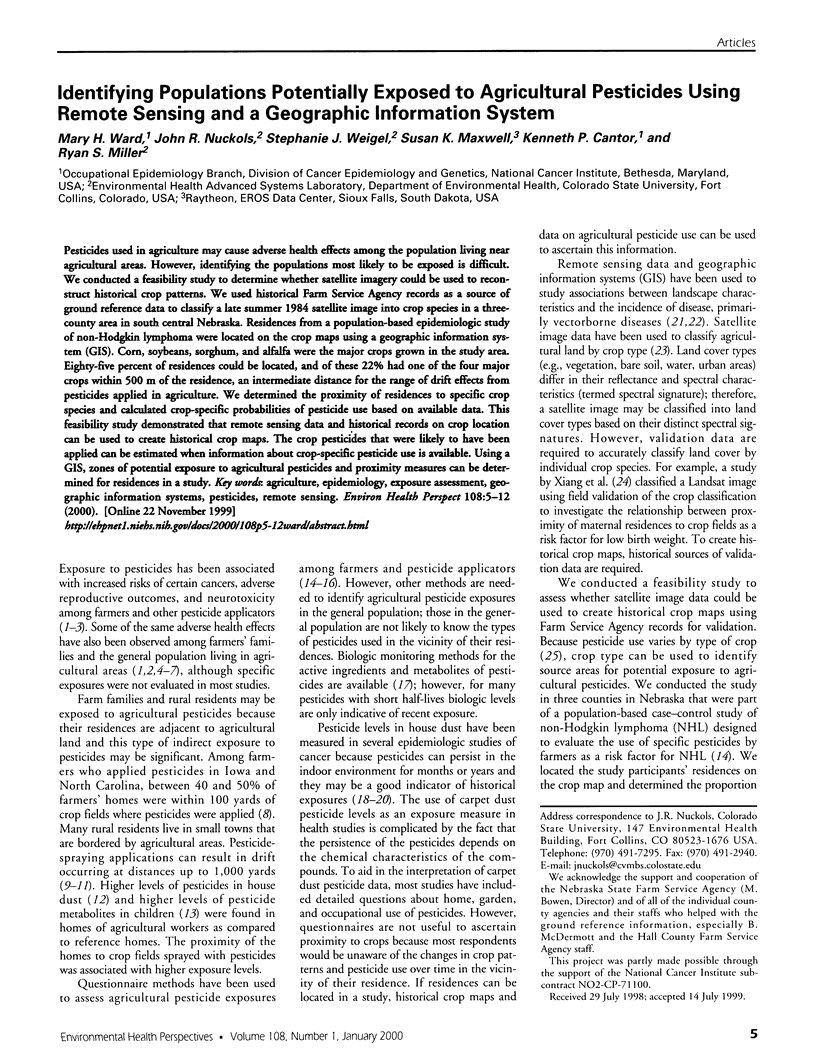
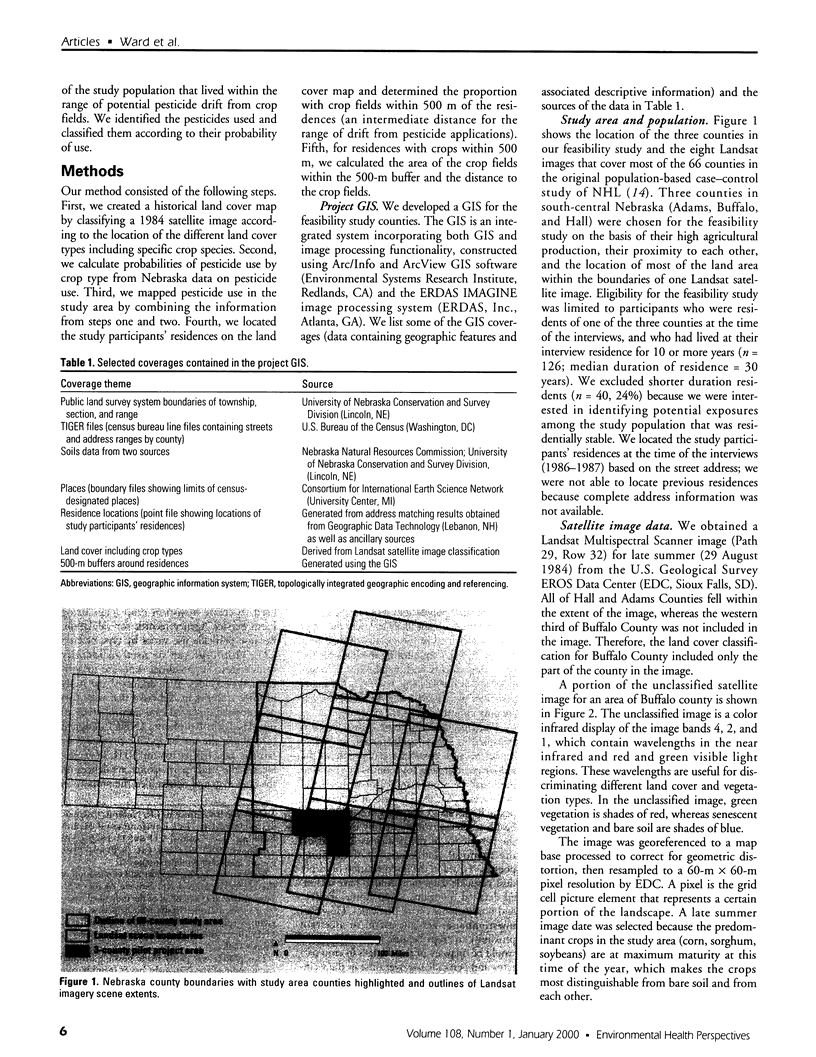
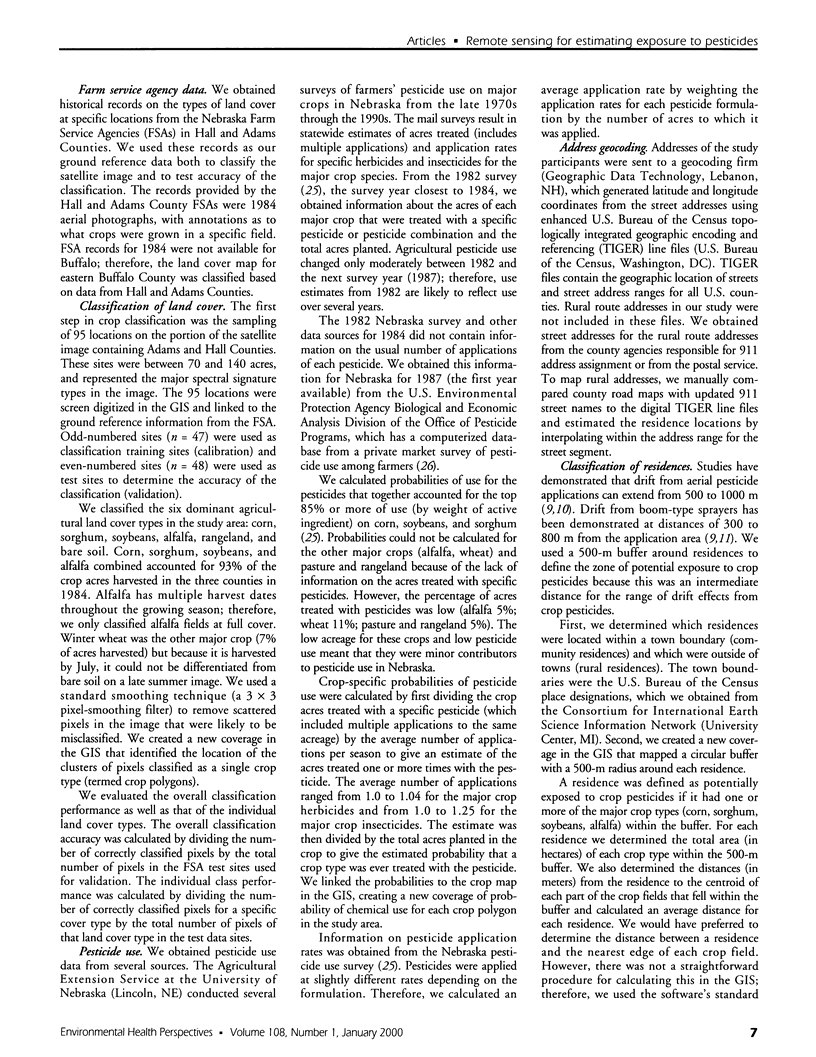
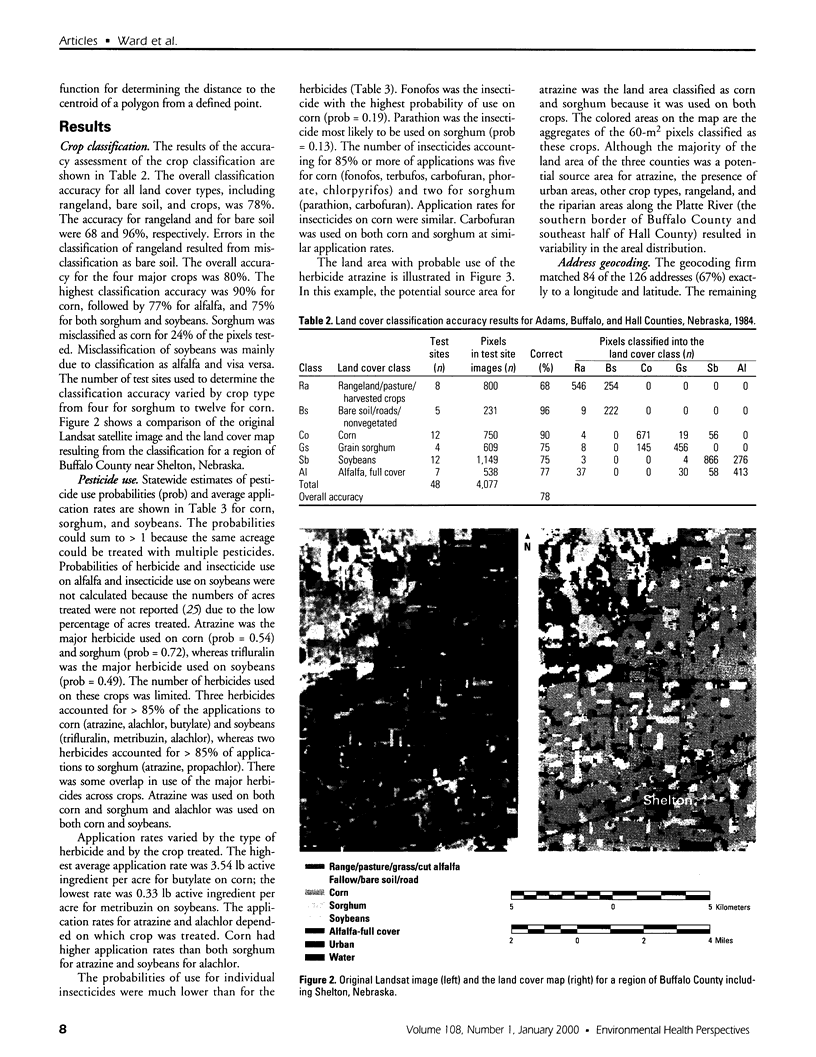
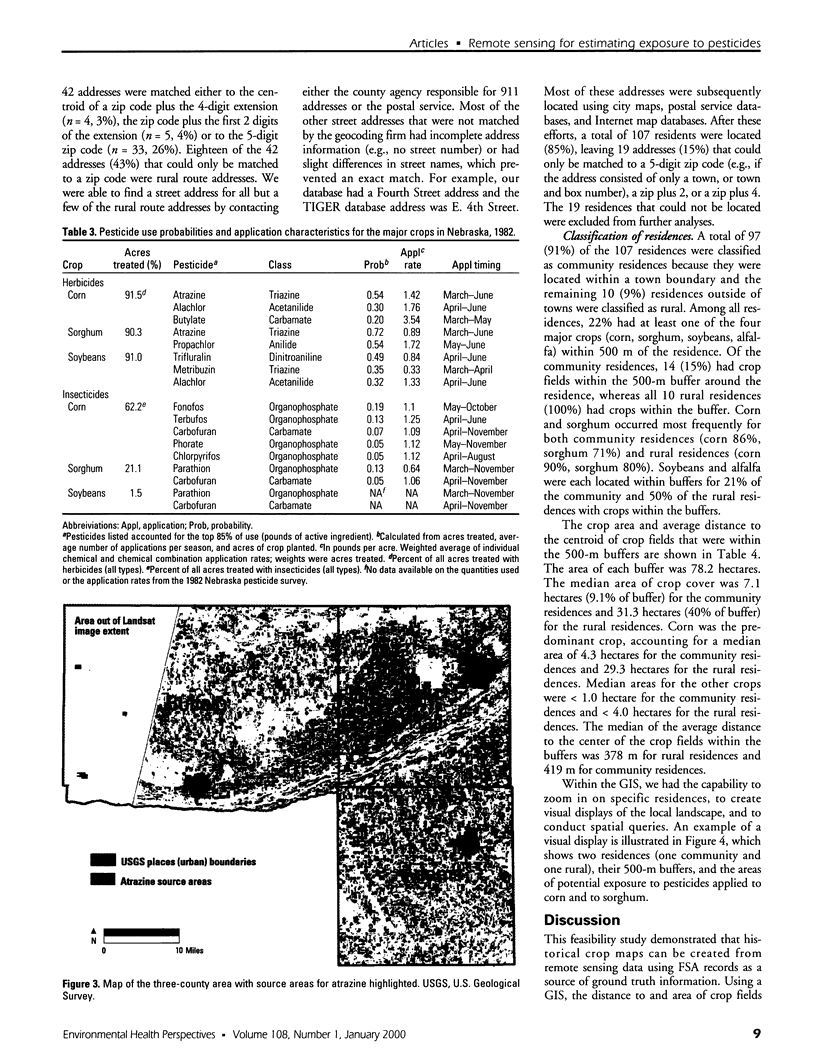
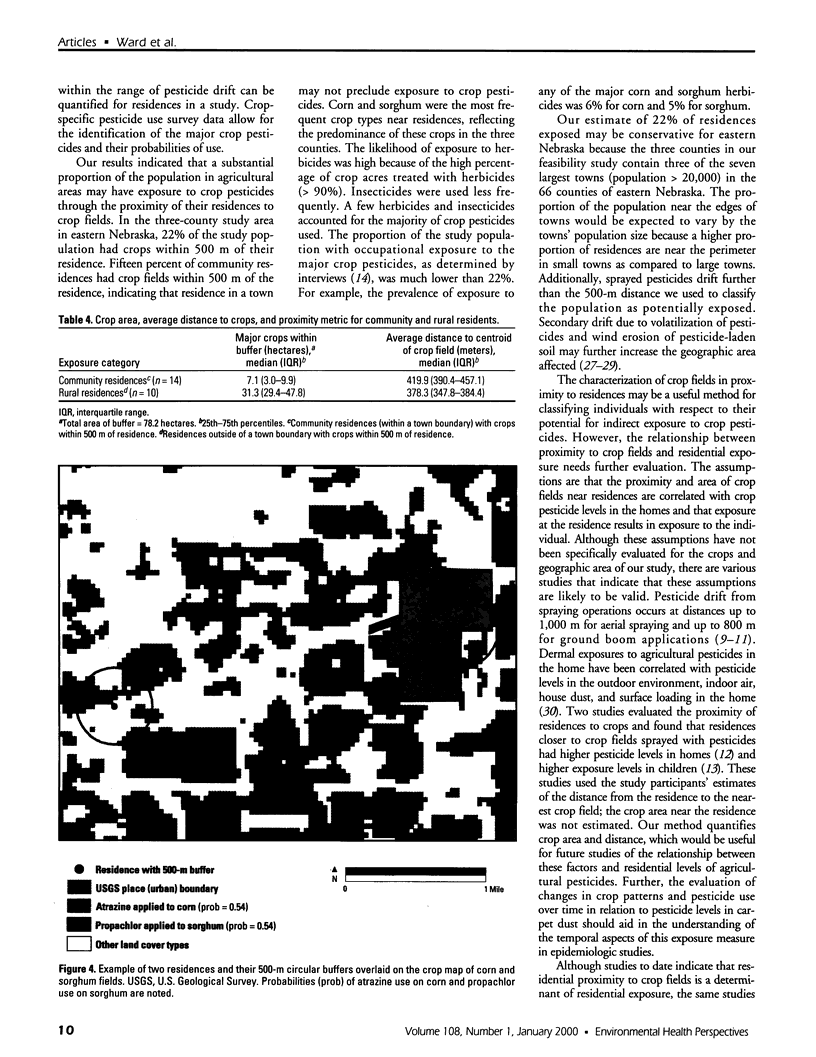
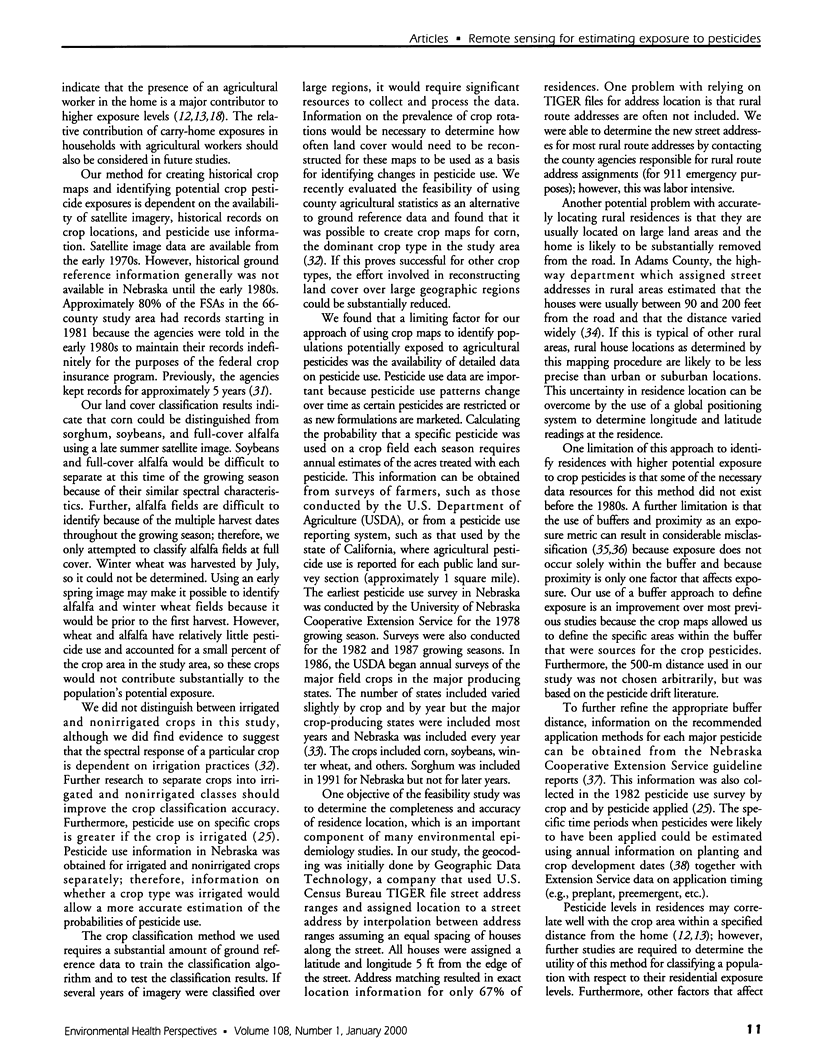
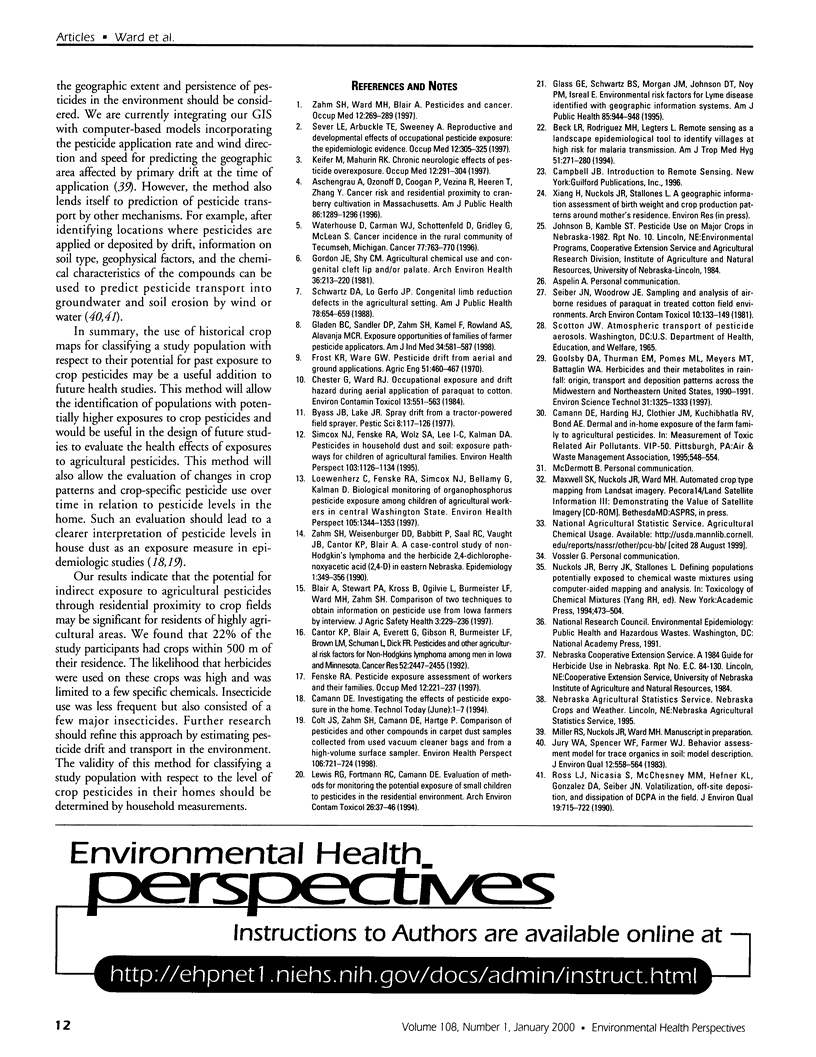
Images in this article
Selected References
These references are in PubMed. This may not be the complete list of references from this article.
- Aschengrau A., Ozonoff D., Coogan P., Vezina R., Heeren T., Zhang Y. Cancer risk and residential proximity to cranberry cultivation in Massachusetts. Am J Public Health. 1996 Sep;86(9):1289–1296. doi: 10.2105/ajph.86.9.1289. [DOI] [PMC free article] [PubMed] [Google Scholar]
- Beck L. R., Rodriguez M. H., Dister S. W., Rodriguez A. D., Rejmankova E., Ulloa A., Meza R. A., Roberts D. R., Paris J. F., Spanner M. A. Remote sensing as a landscape epidemiologic tool to identify villages at high risk for malaria transmission. Am J Trop Med Hyg. 1994 Sep;51(3):271–280. doi: 10.4269/ajtmh.1994.51.271. [DOI] [PubMed] [Google Scholar]
- Cantor K. P., Blair A., Everett G., Gibson R., Burmeister L. F., Brown L. M., Schuman L., Dick F. R. Pesticides and other agricultural risk factors for non-Hodgkin's lymphoma among men in Iowa and Minnesota. Cancer Res. 1992 May 1;52(9):2447–2455. [PubMed] [Google Scholar]
- Chester G., Ward R. J. Occupational exposure and drift hazard during aerial application of paraquat to cotton. Arch Environ Contam Toxicol. 1984 Sep;13(5):551–563. doi: 10.1007/BF01056333. [DOI] [PubMed] [Google Scholar]
- Colt J. S. Comparison of pesticides and other compounds in carpet dust samples collected from used vacuum cleaner bags and from a high-volume surface sampler. Environ Health Perspect. 1998 Nov;106(11):721–724. doi: 10.1289/ehp.98106721. [DOI] [PMC free article] [PubMed] [Google Scholar]
- Fenske R. A. Pesticide exposure assessment of workers and their families. Occup Med. 1997 Apr-Jun;12(2):221–237. [PubMed] [Google Scholar]
- Gladen B. C., Sandler D. P., Zahm S. H., Kamel F., Rowland A. S., Alavanja M. C. Exposure opportunities of families of farmer pesticide applicators. Am J Ind Med. 1998 Dec;34(6):581–587. doi: 10.1002/(sici)1097-0274(199812)34:6<581::aid-ajim6>3.0.co;2-u. [DOI] [PubMed] [Google Scholar]
- Glass G. E., Schwartz B. S., Morgan J. M., 3rd, Johnson D. T., Noy P. M., Israel E. Environmental risk factors for Lyme disease identified with geographic information systems. Am J Public Health. 1995 Jul;85(7):944–948. doi: 10.2105/ajph.85.7.944. [DOI] [PMC free article] [PubMed] [Google Scholar]
- Gordon J. E., Shy C. M. Agricultural chemical use and congenital cleft lip and/or palate. Arch Environ Health. 1981 Sep-Oct;36(5):213–221. doi: 10.1080/00039896.1981.10667627. [DOI] [PubMed] [Google Scholar]
- Keifer M. C., Mahurin R. K. Chronic neurologic effects of pesticide overexposure. Occup Med. 1997 Apr-Jun;12(2):291–304. [PubMed] [Google Scholar]
- Lewis R. G., Fortmann R. C., Camann D. E. Evaluation of methods for monitoring the potential exposure of small children to pesticides in the residential environment. Arch Environ Contam Toxicol. 1994 Jan;26(1):37–46. doi: 10.1007/BF00212792. [DOI] [PubMed] [Google Scholar]
- Loewenherz C., Fenske R. A., Simcox N. J., Bellamy G., Kalman D. Biological monitoring of organophosphorus pesticide exposure among children of agricultural workers in central Washington State. Environ Health Perspect. 1997 Dec;105(12):1344–1353. doi: 10.1289/ehp.971051344. [DOI] [PMC free article] [PubMed] [Google Scholar]
- Schwartz D. A., LoGerfo J. P. Congenital limb reduction defects in the agricultural setting. Am J Public Health. 1988 Jun;78(6):654–658. doi: 10.2105/ajph.78.6.654. [DOI] [PMC free article] [PubMed] [Google Scholar]
- Seiber J. N., Woodrow J. E. Sampling and analysis of airborne residues of paraquat in treated cotton field environments. Arch Environ Contam Toxicol. 1981;10(2):133–149. doi: 10.1007/BF01055616. [DOI] [PubMed] [Google Scholar]
- Sever L. E., Arbuckle T. E., Sweeney A. Reproductive and developmental effects of occupational pesticide exposure: the epidemiologic evidence. Occup Med. 1997 Apr-Jun;12(2):305–325. [PubMed] [Google Scholar]
- Simcox N. J., Fenske R. A., Wolz S. A., Lee I. C., Kalman D. A. Pesticides in household dust and soil: exposure pathways for children of agricultural families. Environ Health Perspect. 1995 Dec;103(12):1126–1134. doi: 10.1289/ehp.951031126. [DOI] [PMC free article] [PubMed] [Google Scholar]
- Waterhouse D., Carman W. J., Schottenfeld D., Gridley G., McLean S. Cancer incidence in the rural community of Tecumseh, Michigan: a pattern of increased lymphopoietic neoplasms. Cancer. 1996 Feb 15;77(4):763–770. doi: 10.1002/cncr.1996.2820770402. [DOI] [PubMed] [Google Scholar]
- Zahm S. H., Ward M. H., Blair A. Pesticides and cancer. Occup Med. 1997 Apr-Jun;12(2):269–289. [PubMed] [Google Scholar]
- Zahm S. H., Weisenburger D. D., Babbitt P. A., Saal R. C., Vaught J. B., Cantor K. P., Blair A. A case-control study of non-Hodgkin's lymphoma and the herbicide 2,4-dichlorophenoxyacetic acid (2,4-D) in eastern Nebraska. Epidemiology. 1990 Sep;1(5):349–356. doi: 10.1097/00001648-199009000-00004. [DOI] [PubMed] [Google Scholar]






